You know what they say: “People eat with their eyes first.” This is especially true for food brands that get most of their exposure online, where users can neither smell nor taste the product. How do you overcome this seemingly impossible challenge and set your offer apart from the competition? Meet food marketing.
Tailored food marketing strategies can help work up your target audience’s appetite long before they actually get their hands on your product. What sounds like some ancient wizardry is in fact a skillful mix of knowing how to present food virtually and being able to do so in a way that resonates with your target consumer.
Keep reading to see us explore the ins and outs of food and beverage marketing. You’ll find out what it entails and how its principles can help make any food item appear delicious through the screen and beyond. We’ll also give you some creative food and beverage marketing ideas to sprinkle on top of your core strategy.
Content:
The benefits of high-precision marketing for food businesses
When it comes to marketing food and drinks, generic marketing tactics often don’t cut it. Here’s why you should consider industry-specific food marketing strategies instead:
- Build a true legacy brand. Food marketing allows you to create a distinctive brand identity that resonates with your target audience. Unlike generic tactics, food marketing focuses on what makes your product unique — be it the quality of ingredients, traditional recipes, or sustainable practices. By highlighting these aspects, you can craft an authentic and compelling story that makes your brand one-of-a-kind.
- Create a strong bond with your audience. Well-crafted food marketing strategies will enable you to connect with your target customers on a deeper level. Food is an emotional experience tied to culture, family traditions, daily habits, and personal choices. You can tailor your marketing efforts to tap into these emotions and make your customers feel recognized and understood.
- Discover your niche. Vegan, gluten-free, grain-free — there are endless diets and lifestyles out there. With food marketing, you get to decide whether you’re targeting health-conscious biohackers, gourmet enthusiasts, budget-conscious home cooks, or someone else entirely. This precision ensures that your marketing efforts are not wasted on the wrong crowd.
- Make your products irresistible. Generic marketing often overlooks the importance of visual appeal, but using appetizing high-quality visuals on your landing pages and websites are non-negotiable when it comes to marketing food and beverages. Beautifully presented images and videos of your products can help convey their appeal and make customers crave them more.
- Tap into customers’ emotions. From cooking tutorials and recipes to pairing ideas and behind-the-scenes looks at your production process, interactive content is at the heart of effective food marketing strategies. This kind of content is what keeps your audience interested and invested in your brand, as it shows them what’s possible with your products and how they can bring their family and friends together.
- Establish a consistent social media presence. Food marketing leverages the power of social media to reach a wider audience. Platforms like Instagram, Facebook, and Pinterest are ideal for showcasing your products and the lifestyle they promote. Dedicated marketing strategies help you use these platforms to their full potential.
- Create a buzzing community around your food brand. By focusing on food marketing, you can build a dedicated following around your company. Hosting events, running campaigns, partnering with local foodies, and organizing social media challenges — all of this cultivates a sense of belonging among your audience. This not only supports your brand but also acts as a powerful word-of-mouth marketing tool.
- Demonstrate that you are ahead of the curve. The food industry is ever-evolving, and you need to pay special attention to emerging trends in order to quickly adapt and capitalize on them. Whether it’s the latest dietary craze or a brand-new cooking technique, staying relevant ensures that your brand remains top-of-mind for consumers.
- Convert increased customer attention into sales and revenue. Ultimately, the goal of any marketing strategy is to drive sales, and tailored food marketing is particularly effective in this regard. It helps you find the right people who are likely to become aficionados of your brand, while also effectively distancing you from the whole array of similar products.
By using proper marketing techniques, you help your audience understand your products better and make the most out of them, which leads to increased customer satisfaction and repeat purchases. This long-term approach gives you a chance to turn your food brand into a staple for many consumers, winning the place not only in their fridges but also in their hearts.
12 steps to building a successful food marketing strategy
Building a solid food marketing strategy requires a well-thought-out plan, a commitment, and a fair bit of patience. Here are the 12 steps to guide you through that process, giving you a good head start.
Step #1. Identify your target customer
First and foremost, get to know your target audience inside and out. Who are they? What are their dietary preferences, eating habits, and budget? Where do they shop? What kinds of needs are they trying to address by reaching for your product? When they are browsing supermarket aisles, what else are they searching for? What kind of packaging and presentation is more likely to speak to them?
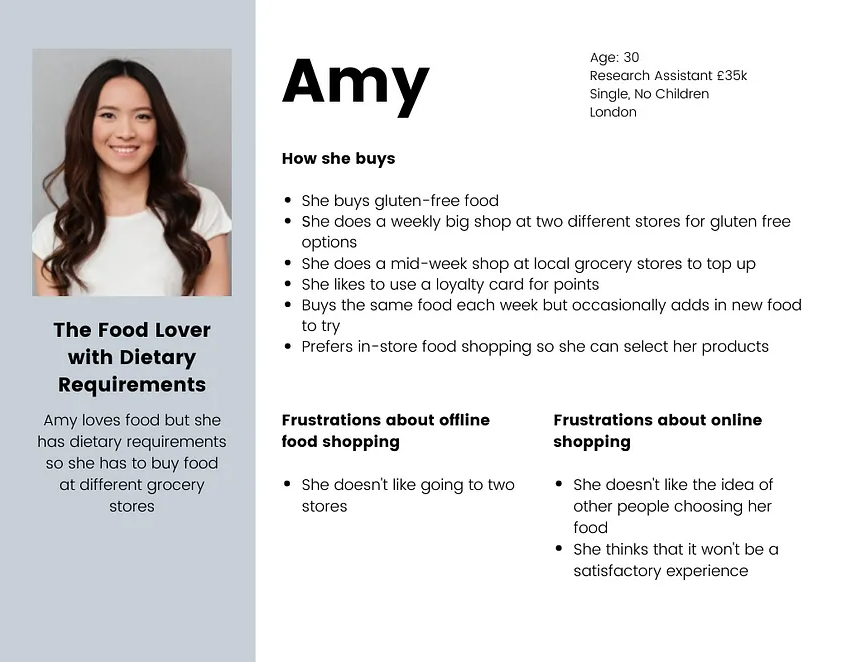
Conduct market research, create realistic customer personas, and engage with your audience through various survey types and social media interactions to understand how they prefer to shop, cook, and eat. This step is crucial as it will shape your marketing efforts going forward.
Step #2. Define your secret ingredient
Today’s food market is highly saturated, and it’s tricky for consumers to navigate it when so many brands look, taste, and sound the same. You can make their life easier by letting them know exactly how your product is different from everything else they’ve tried before.
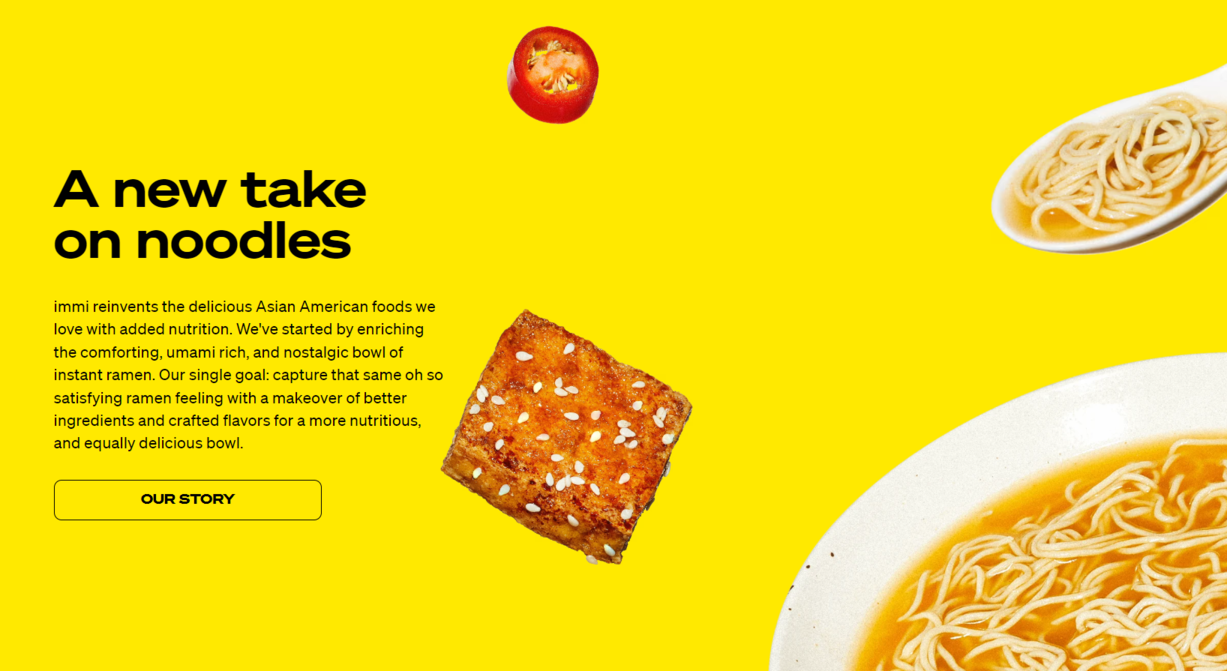
What makes your food brand unique? Is it your use of locally sourced ingredients, a secret family recipe, or eco-friendly reusable packaging? Define your unique value proposition and make it the cornerstone of your marketing strategy. This distinct quality will set you apart from competitors and attract customers who value what you offer.
Step #3. Lay the foundation for your iconic brand
Food is often loaded with cultural, social, and emotional meaning, both for those who serve and consume it. Think of Hershey’s, Pepsi, Cheerios, or Hellmann’s — mentioning these brand names immediately brings back not just flavors but also memories. The goal here is to help your customers create similarly strong positive associations with your brand.
Brands like Heinz have been working tirelessly for decades to make their names synonymous with entire product categories, and they owe their success to clever food marketing campaigns like this one.
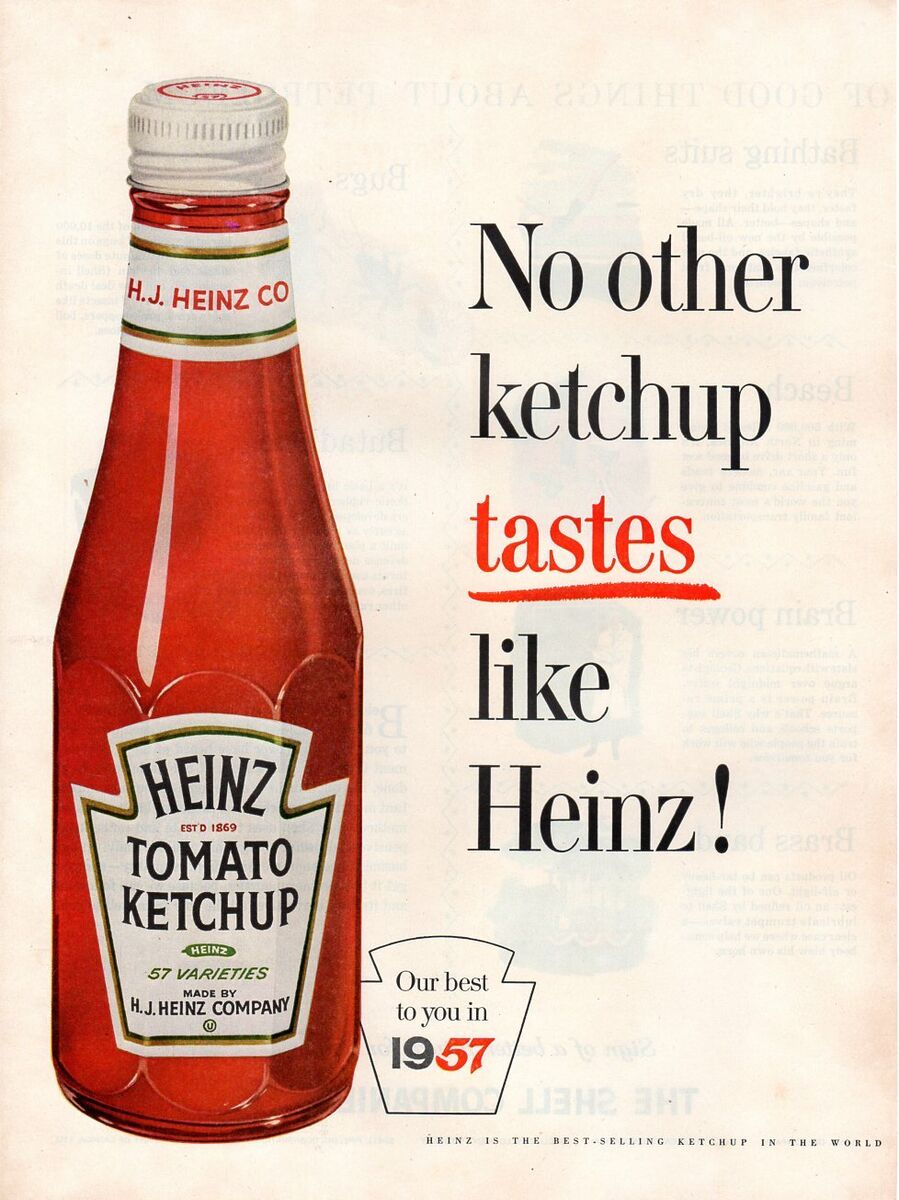
It’s important to develop a consistent and memorable brand identity that reflects your values and resonates with your audience. This includes your brand’s voice, visual elements, and overall presentation. A strong brand identity is also one that accommodates future growth and enables you to gradually introduce new product lines without breaking your established image.
Step #4. Develop a recognizable aesthetic
In the food industry, visual appeal is everything. To showcase your products in the most appetizing way, you need to invest in professional photography and videography. Large images, bright colors, close-ups, bold text — all of this will help you tickle customers’ taste buds. Moreover, your mouth-watering images and videos should form a unique style that is unmistakably yours.
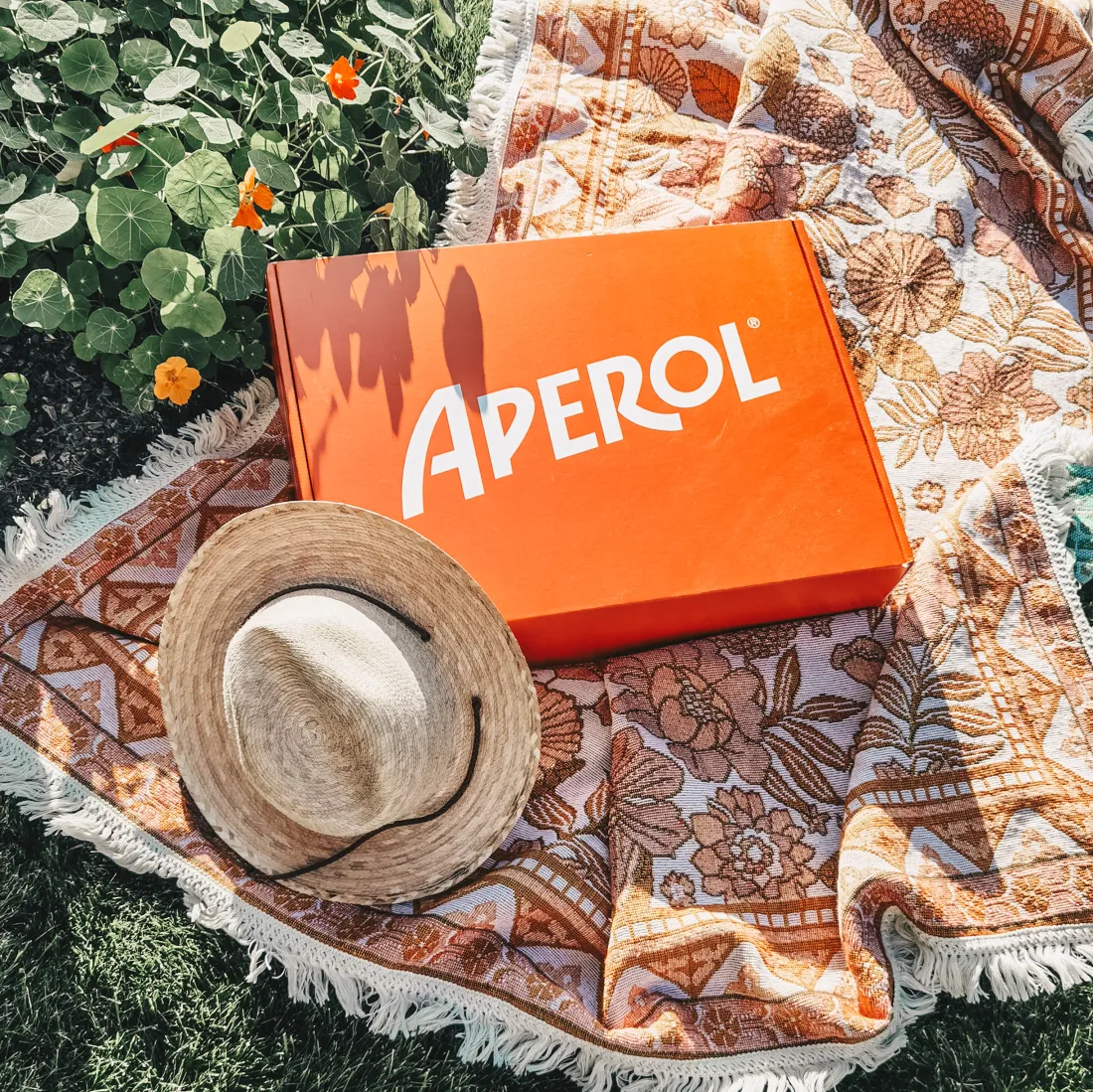
Take Aperol as an example — one glance at their iconic orange packages and merchandise can make you practically feel the legendary bittersweet aperitif on your tongue.

Your fonts, colors, emoji, packaging, and merchandise should all form a unified, well-balanced style that resonates with your customers and fully captures the essence of your brand.
Step #5. Focus on visual-first social media platforms
Social media is a powerful tool for food marketing. Platforms like Instagram, Facebook, and Pinterest are ideal for sharing yummy food-related content and engaging with your target audience. By sharing behind-the-scenes looks, user-generated content, and real-time Stories, you can add depth to your company image and create more opportunities for two-way interactions with followers.
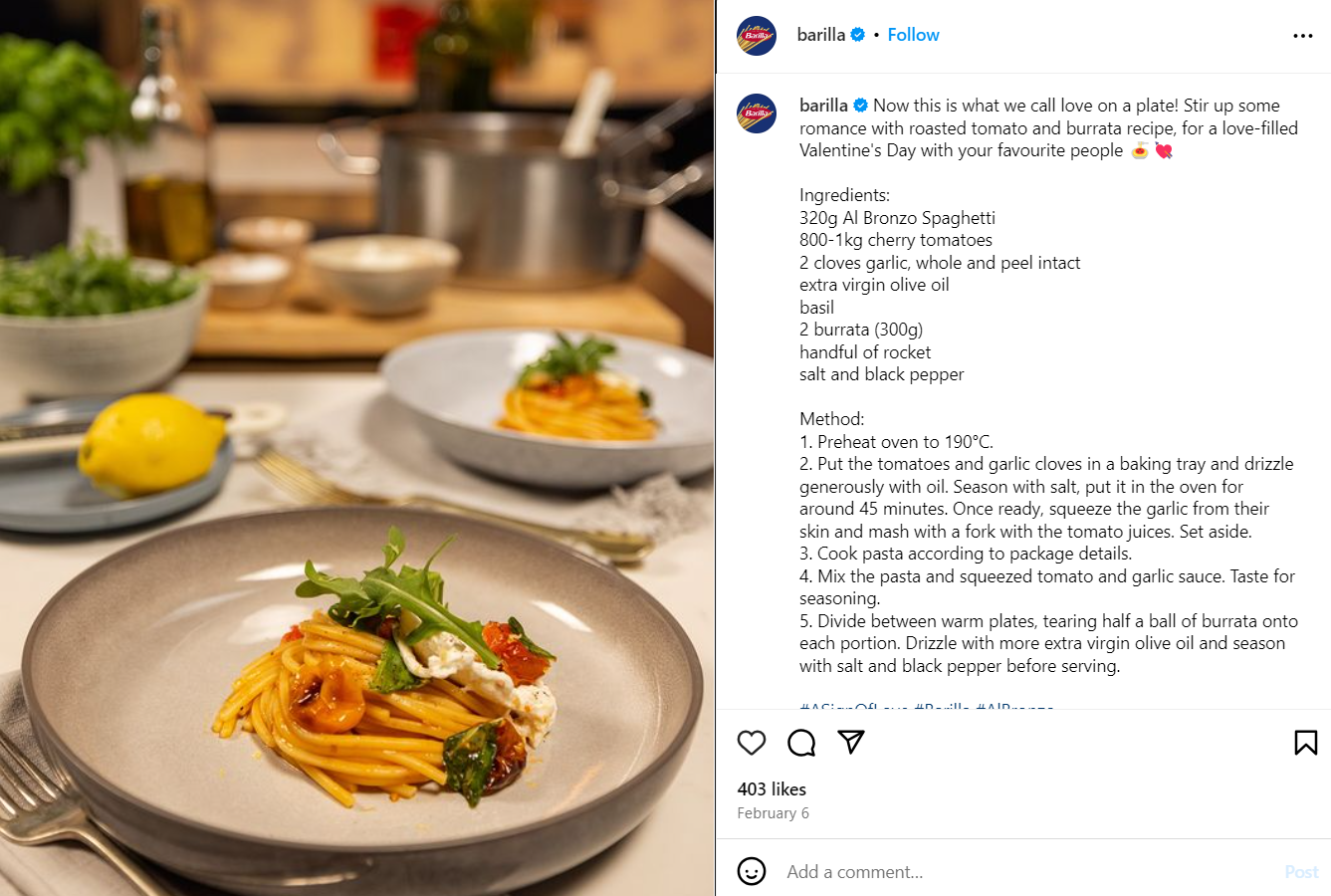
Using visual-first channels enables you to demonstrate how much potential your products have and how other foodies successfully use them to elevate their weekday meals. This is a guaranteed way to inspire your potential customers and make them put your product name on their shopping list.
Step #6. Shape and enrich your content strategy
Visuals alone are quite useless if they don’t bring any value to the customer. To showcase your expertise, you need to introduce in-depth types of content, such as:
- seasonal and themed recipes;
- cook-along videos;
- serving and pairing ideas;
- culinary techniques;
- cookware care tips;
- tips by nutrition experts;
- ingredient breakdown;
- health and lifestyle advice.
Engaging content not only educates your audience but also builds trust and positions your brand as an authority in the food industry.
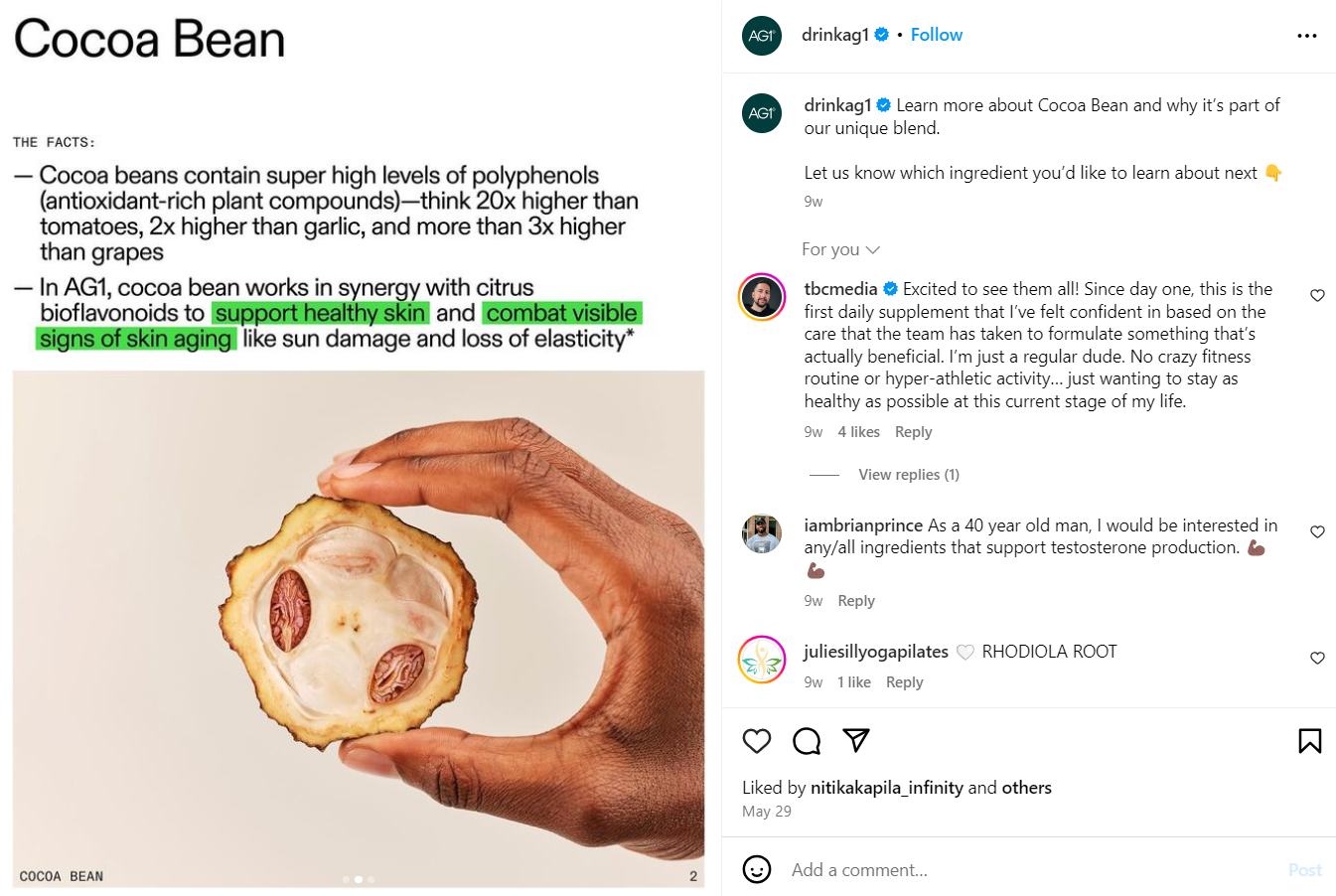
Ingredient breakdowns in particular are great for creating more transparency and letting your audience know how much attention you pay to sourcing high-quality components.
Step #7. Upgrade your email game
Email marketing is an excellent way to stay connected with your audience, and it lets you put those delicious food close-ups front and center. One way to build a mailing list is by offering incentives like discounts or exclusive recipes. You can also introduce regular newsletters with updates, promotions, and educational food content.
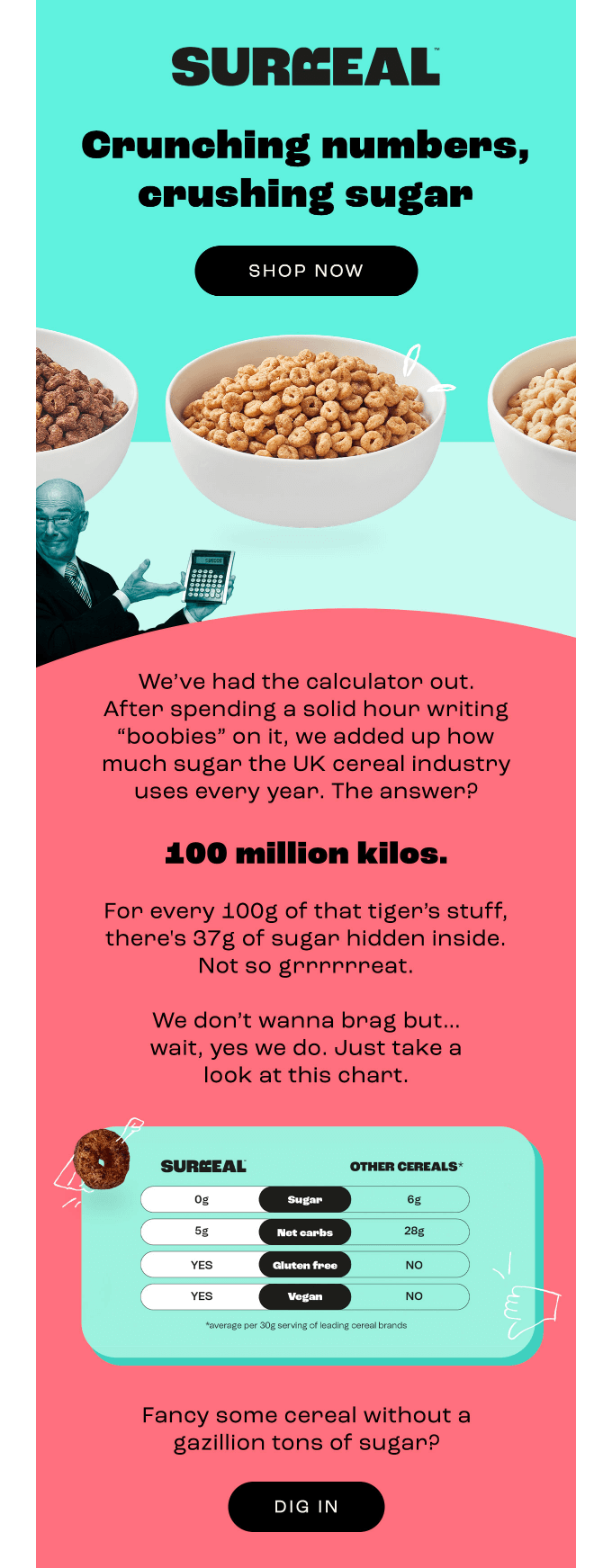
This campaign from Surreal UK proves that you can share educational tidbits with your audience while keeping the tone of voice light and even goofy. Such a format allows you to include charts, videos, buttons, emoji, GIFs, and other interactive or dynamic content in your emails, making them more vivid and captivating.
For food and beverage brands, it also makes sense to send personalized replenishment emails, gently reminding customers that they should stock up on their favorite product before the current package runs empty. You can also take advantage of seasonal emails to highlight relevant products when your audience is most likely to be in the purchasing mood.
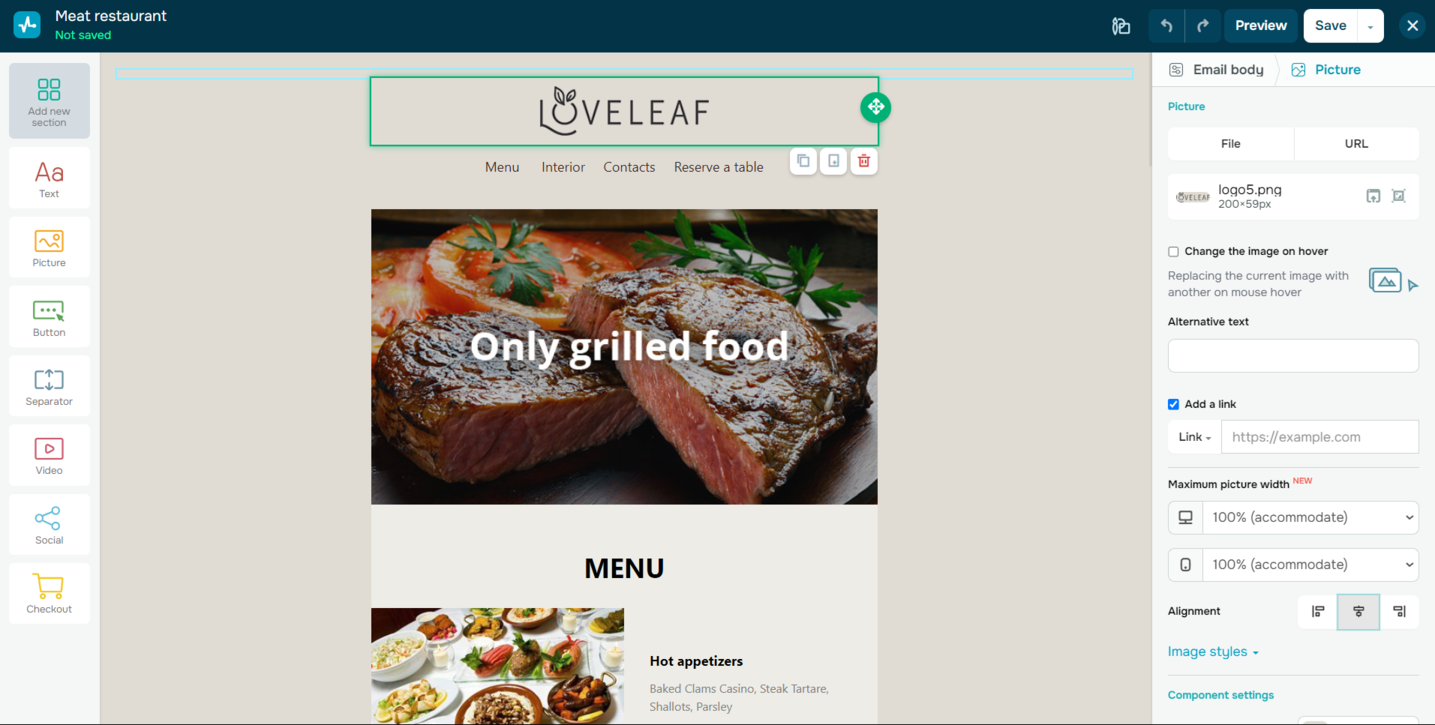
With SendPulse, you can create these and other types of emails in minutes by using flexible templates and customizing them in a drag-and-drop editor. The built-in AI assistant helps you write persuasive and on-point copy and personalize your campaigns with ease. Our email tool also comes with 360 automation, audience segmentation, A/B testing, and analytics tools — and there’s a free-forever plan.
Step #8. Start building relationships with food bloggers
Partnering with food influencers can significantly boost your brand’s visibility and credibility. The main challenge here is to identify niche influencers who align with your brand values and have a genuine connection with your target audience.
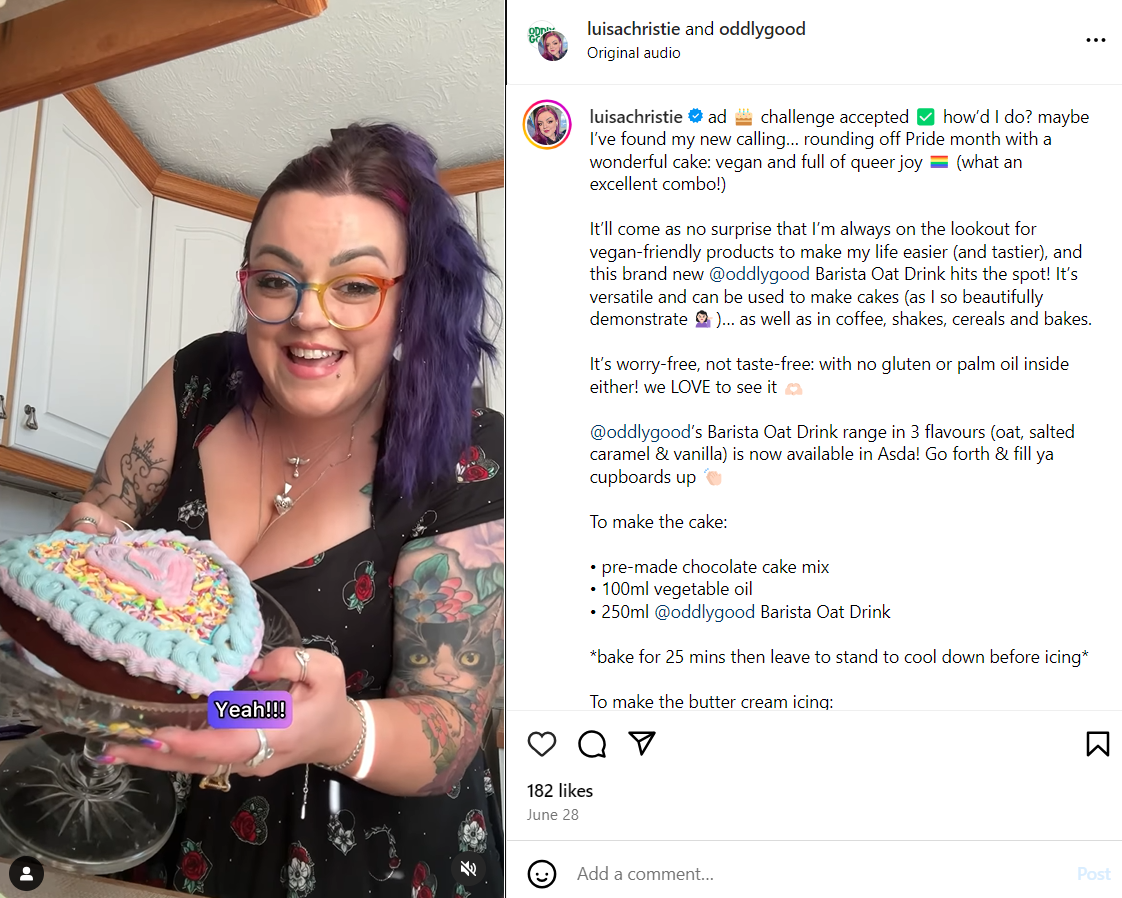
You can let the foodies taste and rate your products or come up with original recipes including them, both of which will give your brand a certain stamp of approval. Another great way to collaborate with influencers is organizing a giveaway, challenge, or some other competitive social media activity that would inform new users about your product and make it easier for them to obtain it.
Step #9. Consider adopting the direct-to-consumer model
The pandemic made us all turn to online shopping, and this trend is here to stay — the global direct-to-consumer food market is projected to reach $195.39 billion by 2031. Popular DTC food services like HelloFresh now offer speedy contactless delivery, customizable subscription boxes, and restaurant-level meal kits.
It all depends on your target demographic, but, generally, the direct-to-consumer trend comes with the following benefits:
- Elimination of middlemen. It enables you to cut out intermediaries, which often results in higher profit margins. Direct interactions with customers also ensure that your brand’s messaging and values are communicated clearly and consistently.
- Catering to customers’ tastes. With meal kits, picky eaters have an easier time specifying their preferences and making sure the freshest food is delivered to them exactly when they need it.
- Cultivating trust. A direct, uninterrupted connection with customers can foster stronger brand loyalty. The DTC model allows you to offer personalized recommendations and tailored marketing, creating a more satisfying customer journey.
- Feedback loop. The DTC approach makes it easier to collect and analyze data on customer behavior, preferences, and purchase patterns. Immediate feedback from customers allows you to make real-time adjustments to your offerings and marketing campaigns.
- Convenience and variety. Customers can tailor their meal kits to their dietary preferences, allergies, or nutritional goals, enhancing satisfaction and loyalty. Subscription boxes are more likely to make them try new and diverse products regularly, keeping the culinary experience exciting.
- Wider audience. Meal kits and delivery options provide a convenient solution for busy consumers who may not have the time to plan meals or physically go to the supermarket. In addition, pre-measured ingredients and easy-to-follow recipes make cooking accessible even for novice cooks.
- Recurring revenue. Introducing subscription boxes creates a predictable and stable income stream, aiding in financial planning and growth. Also, regular interactions through deliveries keep the brand top-of-mind for customers, which helps drive repeat orders.
With more customers becoming digitally savvy, you can safely expect the popularity of pre-portioned, deliver-to-your-door food to only rise. All that is left is to adjust your offer to fit that model.
Step #10. Dominate your local SEO game
Regardless of where you are in your brand journey, owning your local SEO landscape is a crucial milestone if you aim to be easily found by local customers and stand out from competitors. This is relevant even if you offer curbside pickup or delivery only.
Firstly, you need to claim and optimize your Google Business listing. This is crucial for appearing in local search results and Google Maps. Make sure to fill out all the information, including your business name, address, phone number, website, menu, business hours, and business category. Don’t forget to add high-quality photos of your products and location.
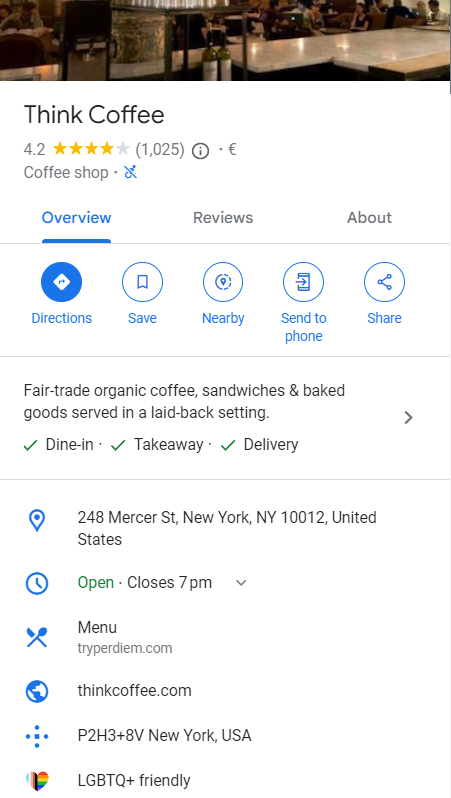
Then, optimize your website for local search. Ensure your business name, address, and phone number are consistently displayed on your website, preferably in the footer and on a dedicated contact page. Incorporate niche local keywords (e.g., “gluten-free bakery in [City]”) into your website content, meta titles, meta descriptions, headers, and alt tags for images.

To emphasize your connection to the local community, publish blog posts that highlight local events, news, or features related to your food brand and align with your values. It’s mandatory that your website is mobile-friendly since many local searches are performed on mobile devices.
Ensure your business information is consistent across all local directories and listings, including Yelp, TripAdvisor, and local business directories. List your business on food-specific platforms like OpenTable, Grubhub, and DoorDash if applicable.
It also helps to create high-quality FAQ pages that address common questions about your business in a conversational tone, which can help capture voice search queries.

In addition, use local hashtags and tag your geolocation on platforms like Instagram and Twitter to increase your visibility in your local area. Besides Instagram influencer collaborations, reach out to local blogs and online magazines like Eater or TimeOut for features or guest posts. Sponsoring local events or partnering with other local businesses can also help you get valuable backlinks from their websites.
Finally, add local business schema markup to your website to help search engines understand your business and display rich snippets in search results, which tend to be more eye-catching and informative. There are many schema markup generators out there, one of them being Structured Data Markup Helper by Google.
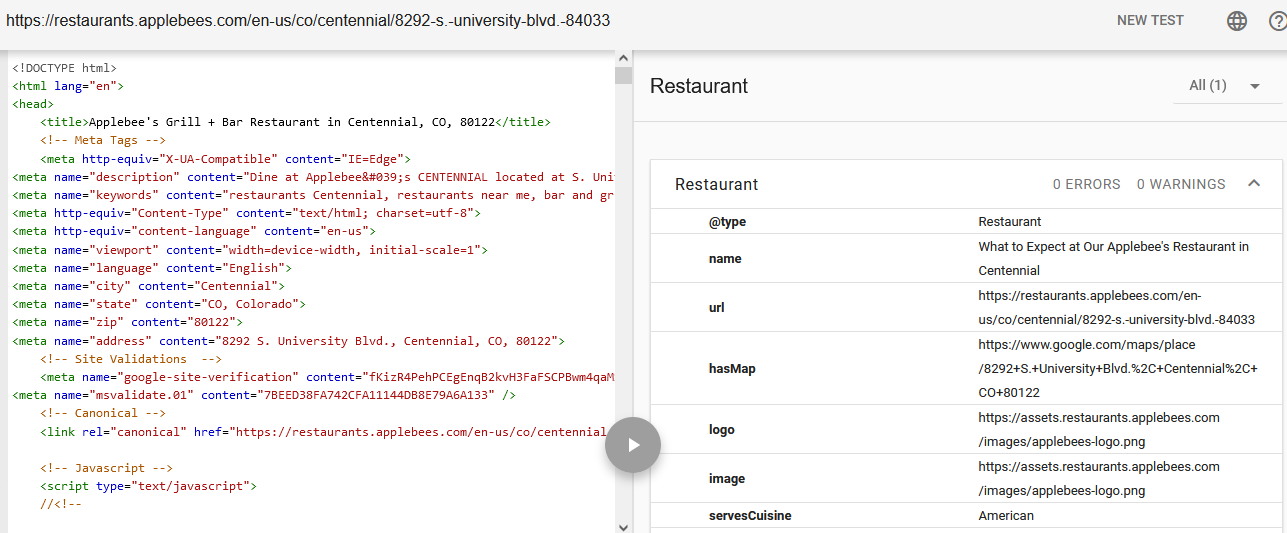
You can rely on Google Analytics to monitor your website traffic and see where your visitors are coming from. Regularly checking Google Business insights will help you understand how users are interacting with your listing.
Step #11. Leverage experiential marketing
Consumers seek memorable experiences rather than just products. Experiential marketing, such as pop-up restaurants, group cooking classes, immersive food events, and food festivals, creates a lasting impression and plants your brand deep into the customer’s mind.
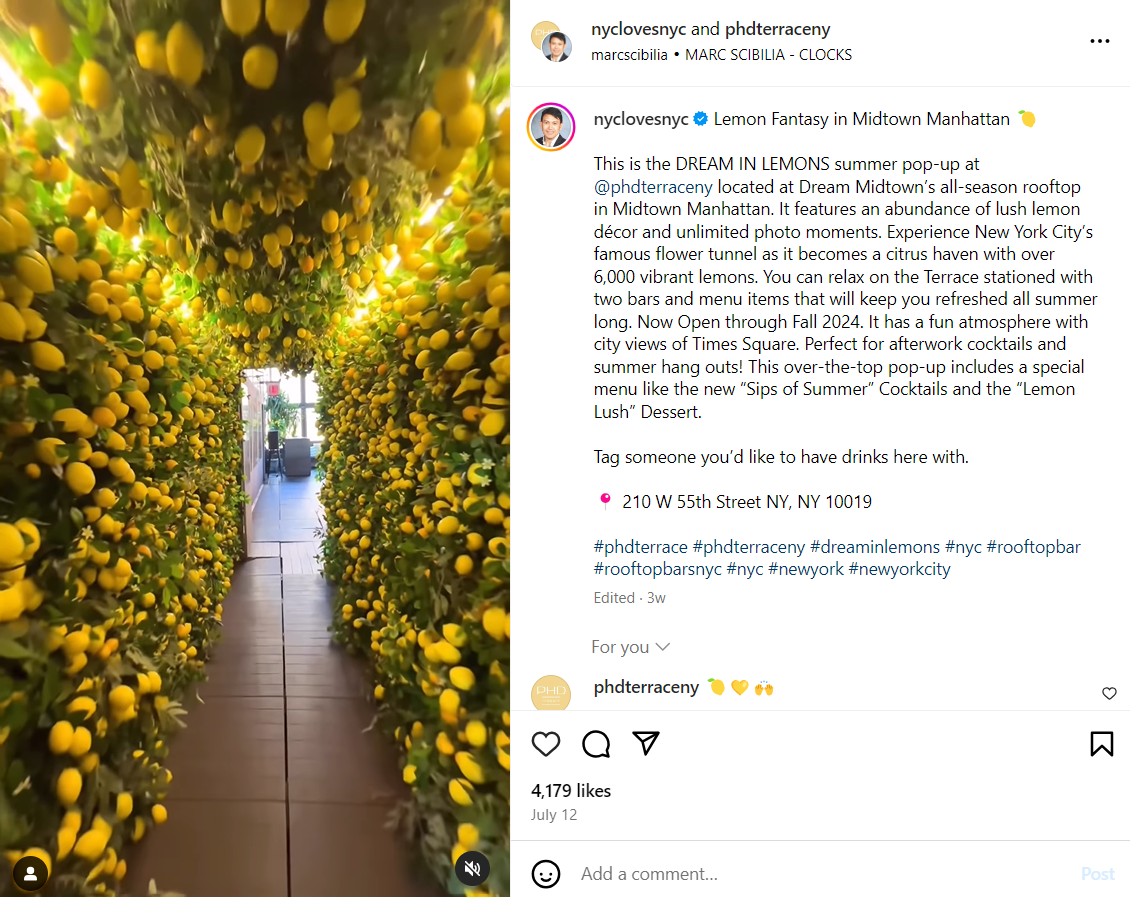
You can tie your experimental projects to specific seasons or occasions to showcase the versatility of your brand. The more instagrammable your pop-up event is, the more user-generated content and word-of-mouth marketing you will receive as the result.
Step #12. Introduce natural scarcity
There’s a growing trend towards supporting local businesses making small-batch products. Food marketing that emphasizes the artisanal, handcrafted nature of products and the support of local economies appeals to consumers who prioritize quality and community impact. Here’s how you can hop on this trend:
- Promote dishes or products that use ingredients only available during certain times of the year. For example, feature a rhubarb tart in the summer or a pumpkin curry in the fall.
- Announce that only a limited number of items are produced each day or week. Use phrases like “made in small batches” or “limited edition” to create a sense of exclusivity and FOMO.
- Organize special tasting events, pop-up shops, or food truck appearances that are available for a limited time. Promote these events as unique opportunities to try something special.
- Partner with other local businesses or chefs to create one-time-only menu items or experiences. These collaborations can generate buzz and attract new customers.
- Use unique or hard-to-find ingredients in your recipes and highlight this in your marketing. For instance, use a rare spice, an heirloom variety of vegetables, or a specialty imported cheese.
- Provide special deals for the first few customers or orders of the day or, alternatively, at the very end of the day. This encourages customers to act quickly to take advantage of the offer.
- Offer members of your loyalty program early access to new products or limited-time offerings. This rewards your loyal customers and incentivizes others to join.
In other words, it can be advantageous to not have a limitless product supply. The more special each shopping experience feels, the more likely the buyer is to return to your brand.
The hottest food marketing trends to watch out for
Being aware of trends is what keeps your brand relevant and appealing to your audience. Your audience must see that you’re in sync with their changing needs and the latest industry innovations.
We’ve mentioned the current trend on small-batch, handmade products, but there are so many more fresh tendencies and crazes in the world of food marketing that you’re guaranteed to find something fitting for your business.
Here are some key trends shaping the food and beverage marketing industry, along with the stats that back them up:
- Sustainability and eco-friendly practices. “Green” products continue to grow despite high inflation. Consumers are increasingly conscious of the environmental impact of their food choices — they expect and even demand that brands turn to sustainable sourcing, recyclable packaging, and ethical practices. Make sure to highlight your efforts to help the planet, whether it’s through reducing waste, supporting local farmers, or promoting plant-based options.
- Health and wellness focus. The demand for healthy, nutrient-dense options is at an all-time high. Consumers want their food to be free from pesticides, hormones, excessive sugars, fatty acids, and potential allergens. You can help them discover better-for-you options by using transparent labeling and educational content.
- Personalization and customization. Over 70% of consumers crave personalized shopping experiences. By capturing behavioral data and using analytics, you can better understand individual preferences and tailor your offerings. From customized meal plans to personalized promotions, providing a bespoke experience helps in building stronger customer relationships.
- Witty social media marketing. As Gen Z gain more purchasing power, they get to dictate how brands communicate with them on social media. The new generation expects brands to be socially active, daring, witty, and familiar with the meme culture. In order to capture Gen Z’s attention, food-related content on Instagram, TikTok, and YouTube has to align with their values and vocabulary. Brands like Oatly and Kraft Mac & Cheese can be used as an inspiration source in this regard as they perfectly nail that quirky and abstract humor Gen Z is known for.
- Culture and authenticity. There’s a growing interest in authentic, culturally rich flavors and cuisines. It conveniently overlaps with the “buy local” trend, which is followed by 60% of consumers. Food marketing campaigns that celebrate cultural heritage and introduce unique, global flavors are more likely to appeal to open-minded consumers looking to spice up their culinary experiences.
- Transparency and traceability. Two-thirds of consumers want to know exactly where their food comes from, how it’s made, and how safe it is. Brands that provide transparent information about sourcing, production processes, and ingredient origins build trust and credibility. Technologies like QR codes, NFC tags, and RFID tags can help customers learn more about the product they are considering purchasing — and make an informed decision.
By following these trends, you can better meet the evolving demands of consumers and stand out in a noisy and crowded food market.
3 examples of delicious and clever food marketing campaigns
The following examples should give you fresh food and beverage marketing ideas and inspire you to experiment with your tone of voice and presentation.
Example #1. Liquid Death
Liquid Death is a bold and edgy beverage brand that packages water in tallboy cans, resembling beer or energy drinks. The brand often flirts with punk rock aesthetics and is known for its irreverent humor and environmental consciousness.
One of its latest campaigns features Ozzy Osbourne warning teens to not snort the Liquid Death electrolyte powder before letting out an ominous laugh and speeding away.

The heavy metal star has led a wild lifestyle, so his warning to not party too hard sounds extremely convincing and true to his character. A campaign like this is doomed to draw attention to the beverage, making it appealing to young rebels who are bored by traditional yoga water bottles and advertising health claims.
Example #2. Marmite
Marmite is a distinctive British food brand known for its strong, savory spread made from yeast extract. Introduced in 1902, Marmite is famous for its polarizing pungent taste, leading to the iconic “Love it or hate it” slogan.
Marmite’s recent campaign targeted British expats leading a desperate marmiteless existence abroad and missing their beloved breakfast staple. In it, the brand had recruited volunteers who agreed to “smuggle” the spread to the US.
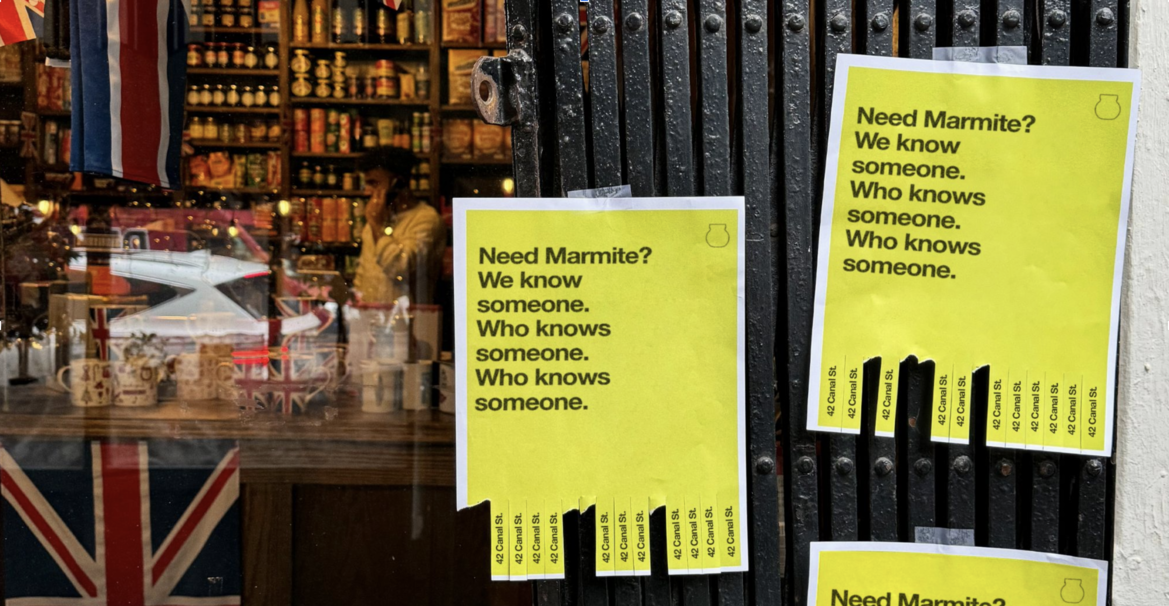
This guerilla marketing stunt was phenomenally well received. Within the first 48 hours of the campaign, over 500 people signed up, offering their “smuggling” services to the expats in need. Moreover, each smuggler has been rewarded with a special edition “Smuggler” jar of Marmite.
Example #3. Quaker Oats
Quaker Oats is an iconic food brand specializing in oatmeal and other grain-based products. Founded in 1877, Quaker Oats has become synonymous with wholesome, nutritious breakfast options.
The brand’s new campaign shares that sentiment, showing a beautiful familial bond between a father and a son as they navigate life’s stages together. From childhood to adulthood, Quaker is by their side, helping them share precious and warm morning moments together.

This strong emotional appeal is bound to put viewers in a sentimental and nostalgic mood, enhancing their positive associations with the oats brand and turning it into a meaningful household staple.
All-in-one solution for your food and beverage marketing needs
Hopefully, our food marketing examples have added some fuel to your creativity tank and motivated you to carve out your own strategy. The next step is to find the right tools for the job.
Try SendPulse to set up, sync, and smoothly run automated flows across multiple channels. Create newsletters, chatbots, pop-ups, websites, push notifications, SMS campaigns, and even online courses with our platform — no prior coding experience is needed.
Get your free account today and give your food marketing game a strong start!









